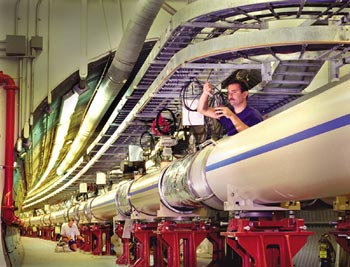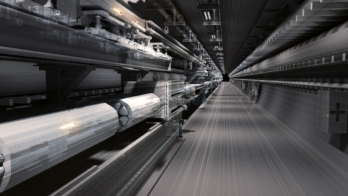More than a year after being asked to study the opportunities and priorities for US nuclear physics research in the coming decade, the Department of Energy/National Science Foundation Nuclear Science Advisory Committee (NSAC) has recently submitted its latest long-range plan for the field. This is the fifth in an influential series of reports that NSAC has prepared on a regular basis since 1979. The US nuclear physics community is a diverse one which has its roots in nuclear structure studies, but which has branched out in recent years to address questions at the forefront of a number of related areas including nucleon structure, nuclear astrophysics, the nature of hot nuclear matter and searches for physics beyond the Standard Model. As part of the planning process, town meetings sponsored by the Division of Nuclear Physics of the American Physical Society for major subfields have provided a forum for presenting new ideas. A long-range plan working group then drafted overall priorities, taking into account current developments in nuclear physics on the world scene.

Recent investments in facilities such as the Relativistic Heavy-Ion Collider (RHIC) at Brookhaven, CEBAF at Jefferson Laboratory and the newly upgraded National Superconducting Cyclotron Laboratory at Michigan State University have positioned the field well for the future. Because of this, the plan concludes that “the highest priority of the nuclear science community is to exploit the extraordinary opportunities for scientific discoveries made possible by these investments.” Unfortunately, as with many branches of the physical sciences, funding for nuclear physics in the US has not kept pace with inflation in recent years. The plan’s first recommendation therefore calls for a 15% increase in base funding, which would allow more effective operation of accelerator facilities, increase support for university researchers, and revitalize the nuclear theory programme.
Looking further into the future, the plan recommends investment in areas where capabilities in the US can be dramatically improved, providing significant new capabilities on the international scene. The highest priority for major new construction is given to the Rare Isotope Accelerator – RIA (see Climbing out of the nuclear valley). This will provide higher intensities of radioactive beams than any present or planned facility worldwide, and will be used primarily for nuclear structure and astrophysics studies, with opportunities also for experiments on fundamental symmetries and in a number of applied areas.
Next, the plan recommends the construction of the world’s deepest underground science laboratory, noting that: “This laboratory will provide a compelling opportunity for nuclear scientists to explore fundamental questions in neutrino physics and astrophysics.” The plan also recommends the upgrade of CEBAF to 12 GeV by the addition of additional, high-field, superconducting cavities (see How CERN became popular with US physicists).
Finally, the plan endorses a number of smaller initiatives, including R&D towards an electron-ion collider that could be integrated into the RHIC facility. The scientific case for such a facility is currently under active consideration within the nuclear physics community.





